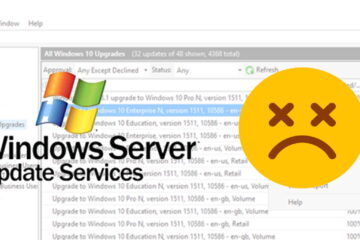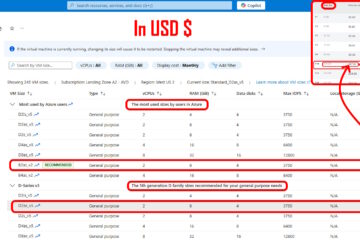Ensuring website accessibility for the visually impaired is crucial in today’s digital age. Implementing features such as screen reader compatibility, keyboard navigability, and appropriate color contrast greatly enhances user experience for visually impaired individuals. Websites that incorporate these elements not only comply with Web Content Accessibility Guidelines (WCAG) but also provide an inclusive environment for all users.
Accessibility features, such as providing keyboard-navigable menus and dynamic text, are essential for usability. Logical layouts and clear navigation can make it easier for visually impaired users to interact with web content. Furthermore, incorporating screen readers, which are commonly used tools, allows users to hear the content of the website, making it accessible despite visual impairments.
In addition, accessibility for the visually impaired involves thoughtful design choices, such as ensuring visible mouse pointers and creating concise titles and headings. These enhancements allow users with visual impairments to accurately track their movements and maintain a seamless browsing experience. By prioritizing accessibility, websites can become more inclusive and user-friendly for everyone.
Essential Principles of Accessible Design
Designing for website accessibility for the visually impaired involves ensuring that all users can perceive and operate interfaces seamlessly. This entails several key principles which are broken down below for clarity.
Perceivable Information and User Interface
To ensure a website is perceivable, the information and user interface components must be presented in a way that users can recognize and understand. This includes providing text alternatives for non-text content such as images. Good ALT text must describe the image accurately, making it accessible for those who use screen readers.
Using appropriate color contrasts helps users with visual impairments distinguish between different elements on the page. High contrast ratios between text and background ensure readability. For example, black text on a white background provides clear contrast, whereas light gray text on a white background might not.
Additionally, websites should allow users to adjust text size without losing functionality or content. Implementing a scalable design ensures that interfaces remain functional and accessible even when users zoom in for better readability. Responsive design is crucial for maintaining accessibility across different devices and screen sizes.
Operable User Interface and Navigation
A website’s user interface must be operable by all users, including those with visual impairments. This includes supporting keyboard navigation to ensure all functionalities are accessible without a mouse. Elements such as forms, buttons, and menus should be easily navigable using keyboard shortcuts.
Designing with operability in mind also involves providing sufficient time for users to read and interact with content. Avoid auto-scrolling or timing out features that can disrupt the user experience. Instead, allow users to start, pause, and stop such actions according to their needs.
Ensuring navigation is logical and consistent helps users understand the website structure and find information quickly. Implementing clear headings, labels, and landmark roles helps screen readers convey the structure of the page effectively.
Lastly, avoid using elements that can cause seizures, such as flashing content. Adopting the practices from the WCAG guidelines makes web experiences safer and more inclusive for all users.
Implementing Accessibility Features
Implementing accessibility features for visually impaired users involves various strategies. Critical elements include offering text alternatives for non-text content, ensuring content adaptation and presentation, and enabling keyboard accessible navigation.
Text Alternatives for Non-Text Content
Providing text alternatives for images and other non-text content is essential. Screen readers rely on alt text to convey image information to visually impaired users. Alt text should be descriptive and concise.
Descriptive link text also helps users understand the purpose of links. For example, instead of using “click here,” use “read more about website accessibility.” This practice enhances website accessibility for the visually impaired.
Adaptable Content and Presentations
Content should be adaptable to meet the needs of visually impaired users. Logical layouts and clear navigation are fundamental. Ensuring proper color contrast between text and background helps users with low vision. Dark text on a light background is often more readable.
Dynamic text that scales with viewport changes is critical. Use relative units like percentages or ems for font sizes. This allows users to resize text without disrupting the design.
Keyboard Accessible Navigation
Ensuring that all website functions can be performed using a keyboard is vital. Many visually impaired users rely on keyboard navigation instead of a mouse. Include focus indicators to show which element is in focus.
Provide keyboard-navigable menus and dynamic elements. Users should be able to access all interactive elements, such as buttons and forms, using Tab and Enter keys. This practice improves keyboard navigability and overall user experience.
Effective implementation of these features ensures better website accessibility and inclusivity for visually impaired users. Proper attention to detail can significantly enhance usability and access.
Advanced Accessibility Technologies
Modern web accessibility for the visually impaired focuses on integrating tools like screen readers, voice recognition software, and customizable display settings. These innovations enhance user experiences by providing more interactive and adaptive interfaces.
Screen Reader Compatibility
Screen readers transform text and graphical content into audible speech, enabling visually impaired users to navigate websites effectively. Notable screen readers include JAWS (Job Access With Speech), NVDA (NonVisual Desktop Access), and VoiceOver for macOS. They interpret HTML and ARIA (Accessible Rich Internet Applications) tags, providing descriptions of images, form fields, and interactive elements.
A well-coded website ensures compatibility with these tools. HTML5 semantic elements, such as , , and , and proper use of ARIA roles, states, and properties enhance screen reader functionality. This compatibility is crucial for delivering an inclusive user experience.
Voice Recognition Software
Voice recognition software, like Dragon NaturallySpeaking and Google Voice Access, allows users to control their devices and navigate websites using voice commands. These tools benefit users with mobility impairments alongside those with visual impairments by enabling hands-free interaction.
Widespread support for voice commands is integrated into many modern browsers and operating systems. Web developers can optimize their sites by incorporating clear, concise text and avoiding overly complex structures. By doing so, they ensure smooth interaction with voice recognition tools, making web content more accessible to everyone.
Customizable Display Settings
Customizable display settings enable users to adjust the appearance of websites according to their preferences. Features like adjustable font sizes, high contrast modes, and color filters cater to users with various visual impairments. Tools such as Chrome Lens provide filters for color blindness and options to modify web page appearance.
Websites offering built-in customization options empower users, allowing them to tailor their browsing experience. Implementing CSS variables and media queries can help developers create adaptable interfaces. By prioritizing customizable display settings, websites become more accessible, providing an improved experience for visually impaired users.
Web accessibility tools are essential for creating an inclusive internet. Screen reader compatibility, voice recognition software, and customizable display settings are critical components in achieving this goal. Each technology contributes uniquely, ensuring users of all abilities can effortlessly access and interact with web content.
Legal and Compliance Considerations
Adhering to accessibility guidelines is essential to ensure websites are usable by visually impaired individuals and to avoid legal repercussions. Two primary regulations to be aware of are the Web Content Accessibility Guidelines (WCAG) and the Americans with Disabilities Act (ADA).
Web Content Accessibility Guidelines (WCAG)
WCAG is a set of guidelines developed by the World Wide Web Consortium (W3C) to provide a single shared standard for web content accessibility. These guidelines focus on four principles: Perceivable, Operable, Understandable, and Robust (POUR). Each principle has specific criteria that websites must meet.
To comply with WCAG, websites should include features such as alt text for images, which describe the imagery for screen readers, and high-contrast color schemes to aid visually impaired users. Keyboard navigability is also crucial, allowing users to access all functions without a mouse.
WCAG is divided into three levels of conformance: A (basic), AA (medium), and AAA (high). For most organizations, achieving at least Level AA compliance is recommended.
Americans with Disabilities Act (ADA)
The ADA is a U.S. law that prohibits discrimination against individuals with disabilities, including within digital spaces. Title III of the ADA has been interpreted to require that websites be accessible to people with disabilities, akin to how physical spaces must be accessible.
To comply with the ADA, website owners must ensure all interactive elements, such as forms and buttons, are accessible to screen readers. It’s also important to provide text transcripts for video and audio content, and captioning where applicable.
Recent lawsuits highlight the importance of ADA compliance, as businesses face legal scrutiny. The Department of Justice (DOJ) considers WCAG standards as a guideline for meeting ADA requirements, making it imperative for websites to adhere to these criteria to avoid litigation.
Ensuring compliance with WCAG and ADA requirements not only helps avoid legal issues but also promotes inclusivity and accessibility for all users.




0 Comments